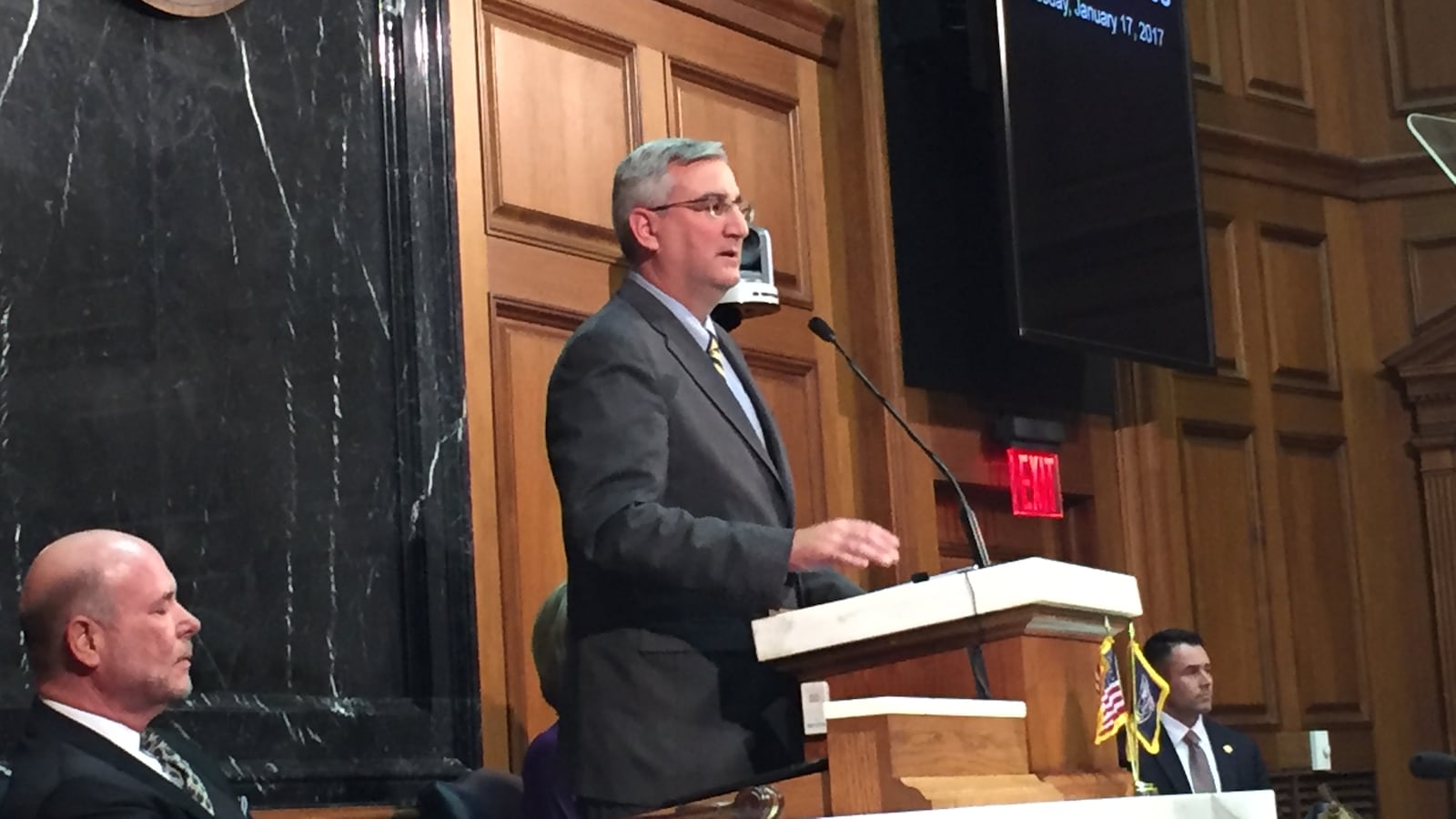As educators and lawmakers call for increases in teacher pay, Indiana Gov. Eric Holcomb is suggesting a far more measured approach, potentially tempering expectations that meaningful raises could be possible in the coming two years.
In his legislative agenda announced Thursday, Holcomb proposed devoting 2019 to studying teacher pay — how much money would be needed, how the state can ensure districts direct funds to salaries, and what amount makes Indiana competitive with surrounding states. He suggested that actual raises might not come until following years.
“We want to do it right, and it’s a big number. We have some ground to make up here,” Holcomb, a Republican entering his third year as governor, said. “And we want to … make sure we are showing local communities that the state is investing in them. We want them to have local control.”
It’s not clear if lawmakers will go along with this plan, however, as some have already made strong calls for upping teacher pay, which even by conservative estimates would probably cost the state hundreds of millions of dollars.
Democrat Phil GiaQuinta, the House Minority Leader from Fort Wayne, said the governor should take bolder steps to “increase teacher pay right now. We don’t need to study this issue before making a final decision.”
With the upcoming year projected to have a tight budget and little new revenue available, Holcomb also proposed eliminating $30 million in annual performance bonuses for teachers, and he is not supporting an increase in state money for pre-Kindergarten.
Instead, Holcomb is suggesting to split the $30 million bonus pool in two other efforts that his administration said are more equitable and impactful: sending about $20 million per year in overall state aid for districts, and putting the remaining $10 million per year toward increasing teachers’ school supply tax credit, from $100 to $500.
His decision to not support an increase in pre-K funding is a departure from years past, and flies in the face of advocates calling for Indiana to make pre-K accessible statewide to 4-year-olds from low-income families. In 2017, Holcomb was a key force in the decision to nearly double the state’s investment in its pre-K voucher program, known as On My Way Pre-K.
Essentially, officials with the Holcomb administration said Indiana can do more with the $20 million per year that it’s already spending on pre-K. One goal would be adding 500 students to the program each year by widening application windows and creating a website where families can apply for the vouchers, rather than in person during business hours. The program, currently serving about 3,000 students across 20 counties, is heading into the fourth year of its five-year pilot.
Officials from Holcomb’s office said that available federal dollars have increased from prior years, putting less pressure on the state to set aside more money. The state is also pursuing another federal grant, which could bring in up to $10 million to help preschool providers identify and address gaps in their current offerings.
Then, in 2021, officials would ask for more state dollars to expand the program to more counties and families, Holcomb’s staff said. Last month, House Speaker Brian Bosma said he would support adding more money to the program so long as it was focused on low-income families, but he also raised the possibility that the state might have to rely on federal funding.
Lawmakers can choose whether to follow Holcomb’s lead, but the governor doesn’t craft legislation. He can, however, veto bills at the end of the General Assembly’s session.
Holcomb, a Republican entering his third year as governor, did not outline exactly what he wants to spend on K-12 through 2021, deferring those specifics until the state releases its final revenue forecast of the year, although he did call for adding dollars to the state’s overall school funding. A budget proposal from the governor’s office is expected in early January.
The governor also wants to:
- Set aside about $3 million per year to fund computer science training for teachers.
- Move up the date to appoint the state’s next schools chief, from 2025 to 2021.
- Require students to enroll in a one-semester class as freshman or sophomores that introduces them to college and career planning.
- Change the career and technical education funding formula to favor classes that result in students earning a certificate or credential before they graduate.
- Loosen the rules for workplace specialist licenses, which allow people with experience in skilled trades to become high school CTE teachers.
The rest of Holcomb’s agenda revolved around workforce development, expanding the state’s trail system, combating the health and mental effects of substance abuse, and creating a hate crimes law.
Read more from Chalkbeat: ‘Indiana’s war on teachers is winning’: Here’s what superintendents say is causing teacher shortages
Indiana’s push to raise teacher pay is creating some unlikely allies
Indiana faces a tight budget in 2019, lawmakers say. Will expanding pre-K be in the cards?

